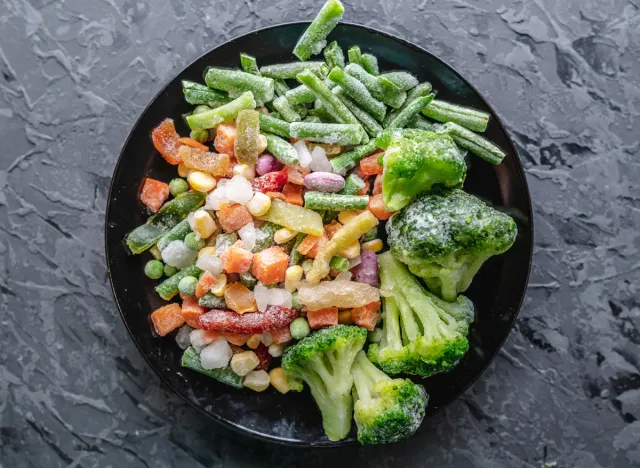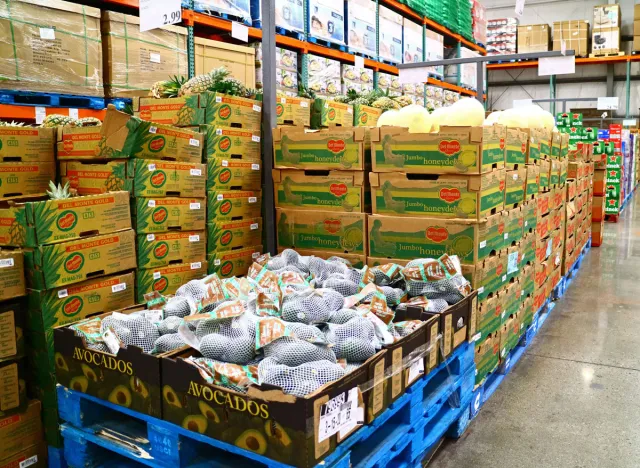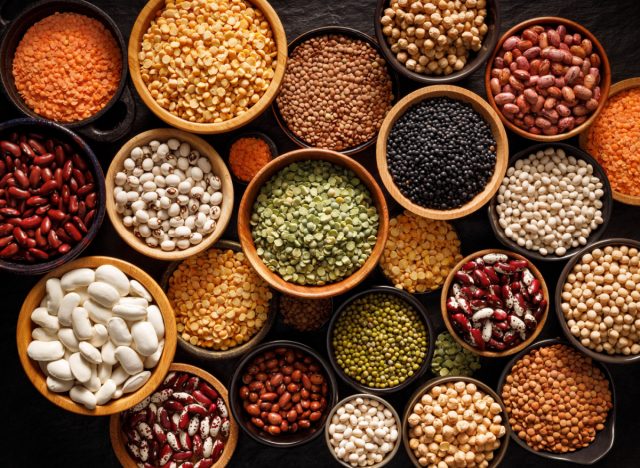The 6 Best Tips for Healthy Eating on a Budget

Let's face it, grocery prices are more mind-boggling than ever at the current moment. On the one hand, the ominous air of inflation has begun to die down, as the Labor Department recently reported that consumer prices fell 0.1% in December, which is the most it has dropped in three years. And on the other hand, we still can't find affordable eggs—prices reportedly rose 60% in 2022 alone. While many of us have yet to decide whether or not we should be hopeful or start raising our own chickens so that we can have eggs again, there's also the looming post-holiday stress that comes from spending all of our money on gifts and travel in the month of December. With all of this talk around food prices this month, a lot of us are wondering if it's possible to even eat healthy while being on a budget.
Eating healthy has been shown to technically cost more than "unhealthy" eating because things like fast food and processed food usually cost less. According to research from the Harvard School of Public Health, the healthiest diets cost around $1.50 more than the unhealthiest diets per day. Statistics like this can feel really discouraging, so we wanted to get to the bottom of how to have a healthy, balanced diet that we love, while still saving as much money as possible.
To learn more about eating healthy on a budget, we talked with a couple of expert dietitians about their favorite pieces of budget-friendly advice. Read on to see what they have to say, and for more healthy eating tips, check out 8 Healthy Foods That Can Also Be Toxic—And Even Fatal.
Buy frozen fruits & vegetables

Buying fresh fruit and vegetables not only can be a bit more expensive in some stores, but the quickest money waster is buying fresh produce that ends up going bad before you have time to use it. The solution? Buying frozen.
"Frozen fruit and vegetables have a long shelf life, and often cost less than their fresh counterparts," says Amy Goodson, MS, RD, CSSD, LD, author of The Sports Nutrition Playbook and member of our Expert Medical Board. "Many people don't like buying a lot of fresh produce because it has the ability to go bad quickly, but frozen produce can typically stay safely in your freezer for up to 6 months, which can help you eat more fruits and veggies and prevent food waste."
Many people avoid buying frozen because they feel that fresh is better when it comes to nutritional value, but this isn't true. "I often get asked if frozen produce is as healthy as fresh," says Sydney Greene MS, RDN. "The short answer is yes—and many times, some frozen vegetables and fruits have more nutrients than their fresh counterparts."
If you're looking for specific produce that works great frozen, especially as smoothie ingredients, "stock up on frozen broccoli, blueberries, and spinach for easy nutrient-dense meals that can same some serious cash," says Lauren Manaker, MS, RDN, registered dietitian and author of The First Time Mom's Pregnancy Cookbook and Fueling Male Fertility.
Shop in season
"Typically, fruits and vegetables that are in season come with a lower price tag," says Goodson. "And the bonus is that they usually taste better as well. Buying in season is a great way to support local farmers, pay less for fresh produce, and eat a variety of fruits and veggies throughout the year."
It's one thing to set the intention of eating seasonally, but how can you know which produce is in season at what time? First, you can check the USDA's Seasonal Produce Guide, where they give you a general overview of what is in season during the spring, summer, fall, and winter. You can also try the Seasonal Food Guide website, where you can search based on month, state, and specific type of produce. However you choose to find your seasonal produce, head to the store or local farmer's market to save yourself some cash.
Buy in bulk where you can

If you're not a Costco cult follower yet, you may want to become one as soon as possible. That way, you can start doing what our dietitians recommend you do in order to start eating healthy on a budget: buy in bulk.
Shutterstock
"Purchasing foods in bulk, or larger packages, can often help you save on cost," says Goodson. "Foods like nuts and seeds, string cheese, whole grain products (granola bars, cereal, rice, pasta), beans, frozen produce and meats, all have a longer shelf life and can help with having healthy foods on hand for a lower price tag."
And if you're going to buy nuts or seeds in bulk, "Ditch the pre-packaged stuff and head to the bulk bin. Not only will this bring the cost down, but you can get organic items for a bit of a discount as well," says Greene.
Make a meal plan
One of the best money savers when it comes to eating healthy is setting aside the time to meal plan for the week ahead. Now, we know this is no easy task, and your schedule simply may not allow for the time and energy required to do take on this step. If that's the case, there are plenty of less time-consuming tasks to try on this list. But, if you're someone who has the time to make this work, you may want to consider setting up a weekly meal plan for yourself.
"The simple act of meal planning can help you avoid impulse buying at the grocery store, which can save you some money," says Manaker. "Plus, planning out your meals can also help you stick to your healthy diet."
Embrace plant-based protein

Shutterstock
Meat can be a healthy part of a balanced diet, especially because of its higher protein content. However, buying fresh or frozen meat from the store can spike up your grocery bill very quickly. A simple tip for eating healthy on a budget is to cut some of your animal proteins with plant-based protein sources instead.
Shutterstock
"Plant-based protein options like beans and lentils can provide some serious protein for very little money," says Manaker. "While you don't have to forego meat entirely, including some plant-based economical options into the mix can help keep you on a healthy diet while saving money."
And, if you choose your plant protein wisely, you may even be able to get a higher dose of protein than you would with certain meat products. For example, a cup of boiled lentils has around 18 grams of protein, whereas a serving of four chicken tenders has only around 9 grams of protein.
Buy canned seafood
"Seafood is good for your brain, but fresh seafood can be pricey," says Greene. "You can buy wild, canned fish like salmon, tuna, mackerel, and anchovies at a fraction of the price, and it is just as nutritious."
One major thing to consider when choosing canned seafood over fresh is the sodium content. A regular can of Bumble Bee Solid White Albacore Tuna has 280 milligrams of sodium, but you can look for canned products that say "low-sodium" or "no salt added." For example, StarKist No Salt Added White Albacore has only 65 milligrams of sodium. So, feel free to go canned when you need to pinch pennies on seafood, but make sure you're reading the nutrition label and are aware of the amount of salt you may be consuming in one sitting.
At the end of the day, we hope that at the very least, that one or two of these tips help you feel more confident in your grocery budgeting. It may feel like there's no way to eat healthy and save money at the same time, but with a little bit of planning and some of these easy swaps, you can save cash in no time.
- Source: https://www.bls.gov/news.release/cpi.t02.htm
- Source: https://fred.stlouisfed.org/series/APU0000708111
- Source: https://bmjopen.bmj.com/content/3/12/e004277.full?sid=820d6e1a-280e-47a6-b8c5-498bfa4657e3
- Source: https://snaped.fns.usda.gov/seasonal-produce-guide
- Source: https://www.seasonalfoodguide.org/
- Source: https://fdc.nal.usda.gov/fdc-app.html#/food-details/172421/nutrients
- Source: https://fdc.nal.usda.gov/fdc-app.html#/food-details/171515/nutrients









